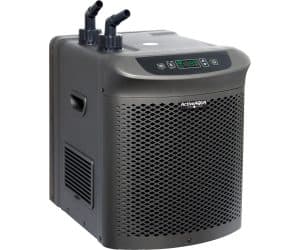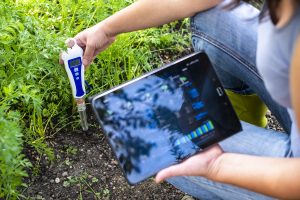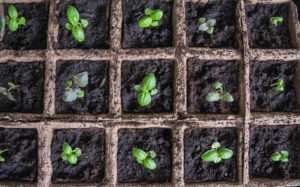Hydroponic farming is going through a renaissance. This trend looks to extend into 2020, as food insecurity rises, global calorie consumption increases and newer, more lucrative crops develop in volume. The development of eating habits to more plant-based food preferences will also play a vital role in the development of hydroponic structures in areas of large populations. That’s because hydroponic farms are taken into consideration to be a solution in satisfying the needs for a more plant-based diet. Hydroponics is very important to make a more unsecure food supply chain.
Some of the challenges facing the hydroponic farming industry are:
- Growing pressure to keep food prices low
- Decreased labor pool
- Increasing costs of production
One of the biggest concerns is labor. The agricultural sector is dealing with a widening labor gap. In North America, the developing global demand for North American-grown agricultural produce is paving the way for more agricultural groups. This has helped most hydroponics farms develop different veggies, and there are plant-based diet trends.
On the other hand, the industry is facing a shrinking workforce, mainly because of the growing number of retirements and less more youthful workers coming into the labor force. The response to that is to reduce reliance on labor and build up the use of automation. While automated irrigation systems have been available for some time, new progression in material handling, scouting, harvesting, and packing results in more revolutionary machines for hydroponic farmers. Some latest advancements include robots that may automatically examine weeds and get rid of them, as well as robots that can scan plants to determine ripeness levels of fruits and target which fruits to harvest.
Meanwhile, as the demand for more plant-based proteins increases, food continues to rise. The hydroponic farming industry is in a special spot where demand for vegetables is developing faster than the rate at which more farms can be built. The industry is also seeing possible food production space being turned to develop recreational crops, also, limiting the quality of available food.
However, to ensure that food is available. The price tag must still be kept low. Consumer spending on vegetables and fruits isn’t always increasing on the price purchasers are spending on other food. While demand is growing, what consumers are inclined to pay is not. Two things need to occur to overcome this trend. The first is that cost needs to be controlled so that there’s minimal increase is prices. The second is that packaging needs to show the consumers the value of the product they’re purchasing.
Illustrating value is vital for hydroponic framers. Foods grown hydroponically have a lower risk for human foodborne pathogens. This is because of the less reliance on pesticides (in a few cases, some hydroponics plants are grown using 0 pesticides).
Additionally, hydroponics means the arable won’t be used exclusively for food production, and this saves those lands for the future generation (sustainability). Hydroponic-farmed products are also typically less tied to seasonal variability and can be positioned close to large populace centers, thereby reducing travel and CO2 emissions. As a result of the decreased quantity of travel time, customers are becoming the most nutritional value from these products.
While the industry is facing many challenges, there are many benefits and trends involving this new way of food processing.
Food safety is the most vital benefit. Most hydroponic farms are in controlled environments. Here, products are developed under strict quality control parameters following strict preventative practices. This also allows for hydroponic growers to avoid the usage of pesticides. Hydroponically grown produce always have fewer recalls than field-grown produce. And, for farms positioned near their consumer base, the company can employ preserve launch strategies, where the product is held until it’s confirmed to be free of pathogens and then launched to the public.
Hydroponic farming will provide refined quality characteristics of the plant, especially nutrition. People want to eat veggies due to the fact it is a more healthy option. People also want to see will changes in their health from changing to more a plant-based diet. But, the change can be slow and demands serving sizes of vegetables that are baseless for a single meal. Enriching the nutritional value of the plant is viable through hydroponic. This is because hydroponics is done under a developed and controlled environment. An increase in pH, changing, and fertilizer of light quality can increase and reduce nutritional compounds in the plants, allowing farmers to choose what nutritional parts to increase.
Why hydroponics is the big thing and also the next big thing
Crops Growing In Any Weather
Hydroponic vegetation grows in a controlled environment. Factors of water supply, temperature, and sunlight are vital for a plant to survive. These factors are continually changing at some point in the year, according to the season.
By using hydroponics for growing crops, the vegetation will not be affected by climate changes. Therefore, farmers can grow vegetables and increase their yield.
Before using hydroponics, some crops are difficult to be grown in winters such as tomatoes and corn. But thanks to this new method of farming, there could be an excessive yield present all year round. As an outcome, there will be no price fluctuations because of the continuous supply present.
Dried Soil
Having poor soil can cause damage to any crop to be grown. They are several factors that determine soil quality, but the most critical ones are the nutrients present and PH.
Having a low PH soil will severely affect your plant’s ability to uptake nutrients. However, when the land which you are planting in have low nutrient levels, early nutrient deficiency syndromes will appear on your plant. These syndromes will result in stunted growth and bad final yield
Pests
Hydroponics are done in closed environments. Most hydroponics are grown in a greenhouse. The greenhouse acts as a barrier to pest infection.
Lower Pesticide Usage
In soil farming, the plants will be grown in an open-air, which makes them more exposed to different types of pests. These pests can get onto your plants by different methods. Some pests get carried by using the wind from far-away farms while some pests spread from neighbor farms.
A Greenhouse From Outside
Pests infections can take place in hydroponics farming. However, these cases are rare to happen. Pests and insects can get through wall gaps or the airflow system, and other pests get into the greenhouse via simply attaching to the farmer’s clothes before entering.




